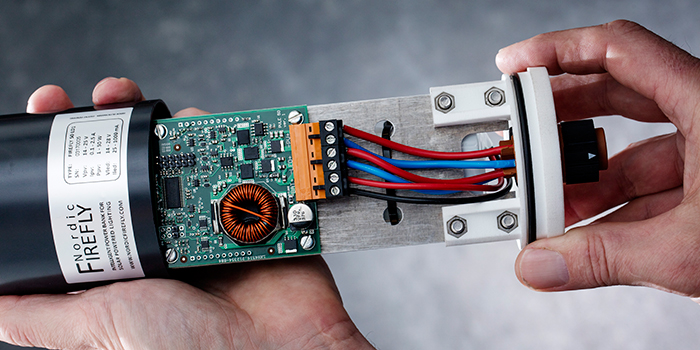Knowledge about efficient conversion of solar energy combined with considerable insight into solar cells have resulted in new efficient electronics for use in solar cell lamps. The electronics has been developed at DTU, and lighting companies expect that it will boost the solar cell lamp market in the coming years.
The use of solar cells as a source of energy for outdoor lighting is not a new phenomenon. However, so far the technology has not been efficient enough to create a real breakthrough in the area.
That is why Danish top energy conversion experts have now joined forces with researchers who have knowledge within both solar cells and lighting to develop a plug-and-play solution that can easily be installed in a solar cell lamp. A small box housing electronics and a battery harvests energy from the lamp's solar cell during the day, stores it in the battery and releases it to the lamp's light source when it gets dark without the significant energy loss normally seen in connection with converting solar energy.
"At the moment, it is expensive to install outdoor lamps as it implies burying underground cables and connecting them to the transmission network to supply the necessary energy. Consequently, the demand for solar cell lamps will increase in future. Firstly, because our new electronics makes it possible to harvest energy even at low light radiation, for example on a grey winter's day, and secondly because it will become much cheaper to install lighting when the large installation costs are eliminated," explains Peter Behrensdorff Poulsen, Project Manager at DTU Fotonik.
Lighting companies excited
Initially, a new company named Nordic Firefly, will sell two different versions of the new electronics. A 10 watt unit and a 50 watt unit, which can be used in both small and large outdoor solar cell lamps. This is a high-end product which consumers will meet in lamps and bollards for lighting up paths in built-up areas, parks and driveways at business premises, at bus stops, and as uplights lighting up buildings from below.

"The lighting business has traditionally been reluctant to introduce solar cell lamps because of the lack of reliable technology. However, the new and efficient electronics that can convert and store sunlight will undoubtedly boost the market. There will be a great interest in installing lamps that supply their own energy completely independently of the utility companies. Peace-of-mind lighting can now be installed in places previously assigned low priority due to the high costs of burying the cables, for instance at bus stops outside built-up areas, in housing associations, etc.," explains Morten Lyhne from Lyhne Design, which, among others, is behind the new Copenhagen street lamp 'Thor'.
The new product is developed on the basis of several years of research conducted by DTU in cooperation with a number of Danish enterprises, which in addition to Lyhne Design include Outsider, AKJ Inventions and Dansk Center for Lys. The product has therefore been adapted to the needs and wishes identified by the lighting companies.